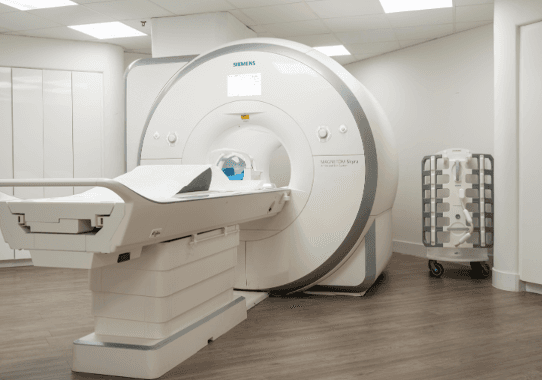Neuroplasticity, often called brain plasticity, is the brain's amazing ability to change, grow, and adapt. This ability allows the brain to reorganize itself by forming new connections between brain cells. Whether you're learning a new skill, recovering from an injury, or adapting to new experiences, neuroplasticity plays a key role. This article explores the different aspects of neuroplasticity, from its mechanisms to its impact on mental health and future research directions.
Key Takeaways
- Neuroplasticity is the brain's ability to change and adapt by forming new neural connections.
- There are different types of neuroplasticity, including synaptic, structural, and functional plasticity.
- Various factors like genetics, environment, and emotions can influence how neuroplasticity works.
- Neuroplasticity is crucial for learning, memory, and skill acquisition, helping the brain adapt to new information.
- Understanding neuroplasticity can lead to better treatments for brain injuries and mental health disorders.
Understanding Neuroplasticity
Definition and Key Concepts
Neuroplasticity is the brain's ability to change and adapt throughout a person's life. It allows the brain to form new neural connections and strengthen existing ones in response to learning and acquiring new skills. When someone learns something new, like playing a musical instrument or speaking a new language, the brain undergoes changes that help it process and integrate this new information better.
Historical Background
The concept of neuroplasticity has evolved over time. Early scientists believed that the brain's structure was fixed after a certain age. However, research in the 20th century began to show that the brain is much more dynamic. Studies revealed that the brain could reorganize itself in response to injury or new experiences, leading to the modern understanding of neuroplasticity.
Types of Neuroplasticity
There are several types of neuroplasticity, including:
- Synaptic Plasticity: Changes in the strength of connections between neurons.
- Structural Plasticity: Changes in the brain's physical structure, such as the growth of new neurons.
- Functional Plasticity: The brain's ability to move functions from damaged areas to undamaged areas.
Neuroplasticity is crucial for learning, memory, and recovery from brain injuries. It shows how adaptable and resilient the brain can be.
Mechanisms of Neuroplasticity
Synaptic Plasticity
Synaptic plasticity refers to the brain's ability to strengthen or weaken synapses, the connections between neurons, in response to increases or decreases in their activity. This process is crucial for learning and memory. When you learn something new, your brain adjusts the strength of synaptic connections to store that information. This can involve long-term potentiation (LTP) or long-term depression (LTD), which are mechanisms that increase or decrease synaptic strength, respectively.
Structural Plasticity
Structural plasticity involves changes in the brain's physical structure. This can include the growth of new neurons, known as neurogenesis, or the formation of new synaptic connections. For example, learning a new skill like playing a musical instrument can lead to the growth of new neural pathways. These changes help the brain to adapt to new experiences and challenges.
Functional Plasticity
Functional plasticity is the brain's ability to move functions from damaged areas to undamaged areas. This is especially important in recovery from brain injuries. For instance, if one part of the brain is damaged, another part can sometimes take over the lost functions. This adaptability is key to rehabilitation and recovery, allowing individuals to regain lost abilities through therapy and practice.
Neuroplasticity is the brain's way of adapting to new experiences and recovering from injuries. By understanding the mechanisms behind it, we can develop better strategies for learning and rehabilitation.
Factors Influencing Neuroplasticity
Genetic Factors
Genetics play a crucial role in neuroplasticity. Genes can influence how easily the brain can adapt and change. Some people may have a genetic makeup that makes their brains more flexible, while others might find it harder to adapt. This genetic variability can affect learning, memory, and recovery from brain injuries.
Environmental Influences
The environment in which a person lives can significantly impact neuroplasticity. Factors such as education, social interactions, and even physical surroundings can either enhance or hinder the brain's ability to adapt. For example, a stimulating environment with plenty of learning opportunities can promote neuroplasticity, while a deprived environment can limit it.
Role of Emotions and Stress
Emotions and stress levels also play a significant role in neuroplasticity. Positive emotions and a low-stress environment can enhance the brain's ability to form new connections. On the other hand, chronic stress and negative emotions can impair neuroplasticity, making it harder for the brain to adapt and change.
Understanding the factors that influence neuroplasticity can help us create environments and lifestyles that promote better brain health and adaptability.
Neuroplasticity in Learning and Memory
How Learning Shapes the Brain
Neuroplasticity allows the brain to form new neural connections and strengthen existing ones in response to learning and acquiring new skills. When a person engages in new experiences, such as learning a musical instrument or acquiring a new language, the brain undergoes structural and functional changes. These changes optimize the brain’s ability to process and integrate new information.
Memory Formation and Retention
Neuroplasticity underlies the capacity for learning and memory, and it enables mental and behavioral flexibility. Research has firmly established that the brain is a dynamic organ and can change its design throughout life, responding to experience by reorganizing connections—via so-called “wiring” and “rewiring.” Scientists sometimes refer to the process of neuroplasticity as structural remodeling of the brain.
Skill Acquisition
Neuroplasticity is influenced by various factors, including genetics, environmental factors, learning, experiences, and emotions. It is a fundamental process underlying learning, memory formation, skill acquisition, and recovery from brain injuries. By rewiring and adapting to new circumstances, neuroplasticity allows individuals to learn, adapt to changes, and recover from challenges.
Neuroplasticity and Brain Injury Recovery
Recovery Mechanisms
Neuroplasticity plays a crucial role in helping the brain recover after an injury. When a part of the brain is damaged, other parts can sometimes take over the lost functions. This ability to rewire itself is what makes recovery possible. For example, after a stroke, the brain can form new connections to compensate for the damaged areas.
Rehabilitation Techniques
Several techniques can help boost neuroplasticity during recovery. These include:
- Physical Therapy: Helps improve movement and strength.
- Occupational Therapy: Assists in regaining daily skills like dressing and eating.
- Speech Therapy: Aids in recovering communication skills.
- Cognitive Therapy: Focuses on improving memory and thinking skills.
Case Studies and Research
Research has shown that neuroplasticity can significantly aid in recovery. For instance, studies on stroke patients have demonstrated that intensive rehabilitation can lead to remarkable improvements. In one study, patients who engaged in regular physical and cognitive exercises showed better recovery outcomes compared to those who did not.
The brain's ability to adapt and heal is truly remarkable, offering hope to many who suffer from brain injuries.
Neuroplasticity in Mental Health
Impact on Mental Health Disorders
Neuroplasticity plays a crucial role in mental health. It helps the brain adapt and change in response to experiences and therapies. This adaptability can reduce the risk of mental health disorders by promoting cognitive flexibility, emotional regulation, and resilience. For instance, during major life changes like starting a new job, neuroplasticity allows the brain to develop new coping strategies and problem-solving skills.
Therapeutic Interventions
Understanding neuroplasticity has led to the development of various treatment methods. Techniques such as cognitive-behavioral therapy (CBT), mindfulness practices, and neurofeedback can stimulate neuroplasticity. These approaches help reshape thought patterns and modify behaviors, leading to positive mental health outcomes.
Resilience and Adaptability
Neuroplasticity enhances resilience and adaptability, which are vital for mental well-being. By rewiring the brain, individuals can better handle stress and adjust to new situations. This adaptability fosters mental well-being by reducing stress and promoting effective adjustment to change.
Neuroplasticity is a key concept in neuroscience, highlighting the brain's ability to reorganize and modify itself throughout life. This dynamic nature is essential for learning, memory, and recovery from challenges.
Future Directions in Neuroplasticity Research
Emerging Technologies
The future of neuroplasticity research is bright with the advent of new technologies. Advanced imaging techniques like fMRI and PET scans allow scientists to observe brain changes in real-time. Additionally, non-invasive brain stimulation methods, such as transcranial magnetic stimulation (TMS), are being explored for their potential to enhance brain plasticity.
Potential Treatments
Researchers are investigating various treatments to harness neuroplasticity for medical benefits. These include:
- Pharmacological Interventions: Drugs that can promote or inhibit neuroplasticity.
- Cognitive Training Programs: Exercises designed to improve brain function.
- Lifestyle Changes: Diet, exercise, and mindfulness practices that support brain health.
Ethical Considerations
As we advance in this field, ethical questions arise. How do we ensure that these technologies are used responsibly? What are the long-term effects of manipulating brain plasticity? These are critical questions that need addressing as we move forward.
The journey of understanding and harnessing neuroplasticity is just beginning, and the possibilities are endless.
Conclusion
Neuroplasticity is a remarkable feature of the brain, allowing it to adapt, change, and heal throughout our lives. This ability to reorganize and form new connections is crucial for learning new skills, recovering from injuries, and adjusting to new experiences. By understanding and harnessing neuroplasticity, we can improve mental health, enhance learning, and develop better treatments for brain injuries. The brain's capacity to change is a testament to its resilience and adaptability, offering hope and potential for growth at any age.
Frequently Asked Questions
What is neuroplasticity?
Neuroplasticity is the brain's ability to change and adapt. It can reorganize its structure and form new neural connections in response to learning and experiences.
How does neuroplasticity help with learning?
When you learn something new, your brain forms new connections and strengthens existing ones. This helps you process and remember information better.
Can neuroplasticity help in recovering from brain injuries?
Yes, neuroplasticity allows the brain to form new pathways and recover abilities lost due to injury. This adaptability aids in rehabilitation and recovery.
What factors influence neuroplasticity?
Neuroplasticity is influenced by genetics, environment, learning, experiences, and emotions. These factors can enhance or limit the brain's ability to adapt.
Is neuroplasticity possible at any age?
Yes, neuroplasticity occurs throughout life. While it might be more pronounced in younger people, older adults can still experience significant brain changes.
How does stress affect neuroplasticity?
Stress can negatively impact neuroplasticity by hindering the brain's ability to form new connections. However, managing stress through healthy habits can promote better brain adaptability.
























